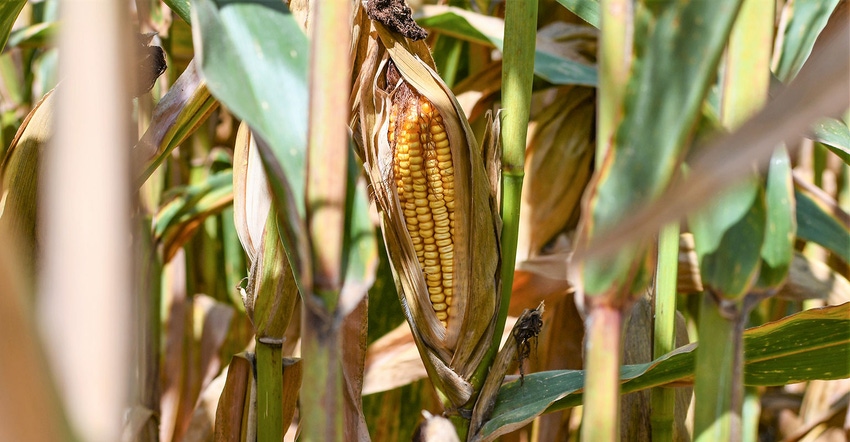
The year 2020 is a prime example of how unpredictable markets can be. A solid marketing plan along with guidance from professionals can help when navigating a financially stressful year.
Jordan Thomas, Scott Agri associate, discussed the 2020 markets as well as what to consider going into the 2021 marketing year.
"We expect volatility to come at some point, but we don't always know when, so we try to prepare our clients for the unknowns," Thomas said. "The year 2020 was another example of how the markets are simply unpredictable. Everything has been back and forth the last couple of years with not a lot of volatility or, at least, not as much as we've seen in years past."
COVID-19 and market prices
Markets had improved some when COVID-19 hit, and shutdowns started around the country.
"Ethanol prices were rocked, which sank corn prices lower across the board. Cotton took a huge plunge as well," Thomas said. "This was counter-seasonal to where you usually see these prices plummet, which is not in the spring but at harvest. In the spring, you typically see prices appreciate. There may not be a huge rally, but the seasonal trend is for the market to move higher."
Between planting and weather issues as well as acreage shifting around in the spring, more rallies usually occur at that time.
"It was odd for futures to sell like they did this past spring," he said. "Now, we're seeing highs near harvest, which again is counter-seasonal. Typically, you see the lows at harvest. I don't think anybody could have predicted we'd have these huge swings with soybeans and get $4 plus on corn. This year has been a wild ride."
The year's narrative continued to fluctuate with weather events across the country.
"It first appeared that we were going to have an average crop year," Thomas said. "There was little demand, and then people started buying and kept buying, which certainly affected the markets and picked up steam, but then the weather events between the windstorm and drought in Iowa and the Plains changed the narrative. Also, hurricane season being incredibly active was a factor in the markets changing as well as the underlying factor of the increased demand in China."
Between weather events and swine fever in China, supply was in question and demand went up, picking up the markets.
"Demand picked up and production went down around harvest, which affected prices," he said. "We're also seeing some issues out of Brazil, which we don't know how long that could last, but that's certainly in play. The bottom line is there's certainly a lot of uncertainty moving forward."
Stepping into 2021
Following such an unpredictable year, the 2021 marketing year has a lot of unknowns.
"The markets could go up, down, or sideways," Thomas said. "We have our thoughts in mind as far as where farmers may need to think about booking, but you can't predict markets. At the end of the day, 2020 is the prime example of you don't have to be right. It's all about having a marketing plan and sticking with it. Start thinking, 'Where should I be booking? What are my options? What are the tools available to me before and after I book?'
"With 2020, we bought call options which allowed us to sell soybeans as futures appreciated and sell aggressively. We didn't know how high the market was going to go, but at the time, we had some better prices and decided to sell, knowing we still had an upside and the market rallied."
With the call options in place, they participated in the market rally.
"Having put options during a wet harvest helped protect prices while farmers were stuck on the sidelines and not able to cut," he said. "It's all about timing and using the tools you have available to you to move forward toward your goal. That's why I would encourage producers to have a plan.
"We're seeing better prices and a better starting point, so I would encourage producers to be paying attention to basis. The basis is strong, but also if futures appreciates anymore and gets to what we call those resistance levels, it is worth, managing risk if there is some on the table. Then being able to access a good options strategy can make all the difference after that."
It's impossible to fully predict the markets, but a well thought out marketing strategy helps keep everything on track.
"If you have a price in mind and your resting orders ready, stick to your plan on when you're going to book," Thomas said. "Think, 'How are you going to have an upside? When should you add downside protection?' Also, educate yourself to expand your marketing toolbox. Giving yourself access to marketing tools is extremely important during these unpredictable years to, at least, help make the decision-making process a bit easier.
"If anybody is ever looking to gain some more knowledge on options, our doors are always open at Scott Agri."
To contact Jordan Thomas for help navigating markets, you can email him at [email protected] or call his office at 501-851-7300. To learn more about Scott Agri Crop Marketers, go to their website at http://bit.ly/scott-agri.
Disclaimer: The risk of loss in trading futures and/or options is substantial and each investor and/or trader must consider whether this is a suitable investment. Past performance, whether actual or indicated by simulated historical tests of strategies, is not indicative of future results.
About the Author(s)
You May Also Like




